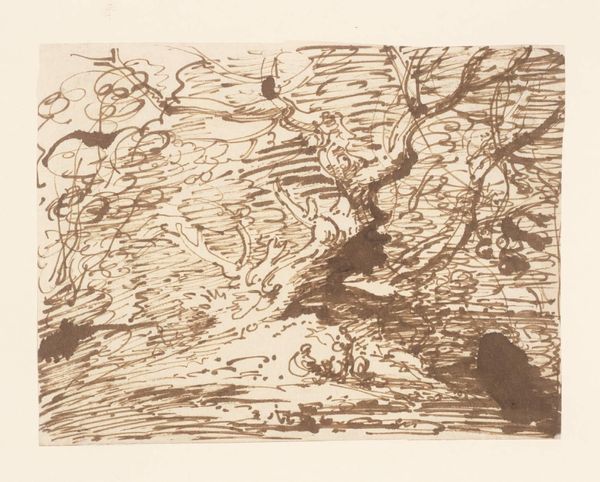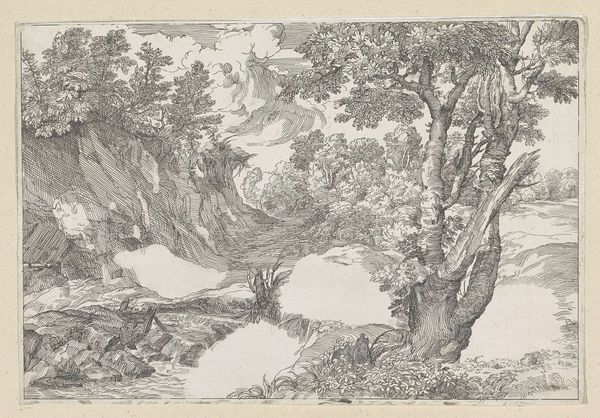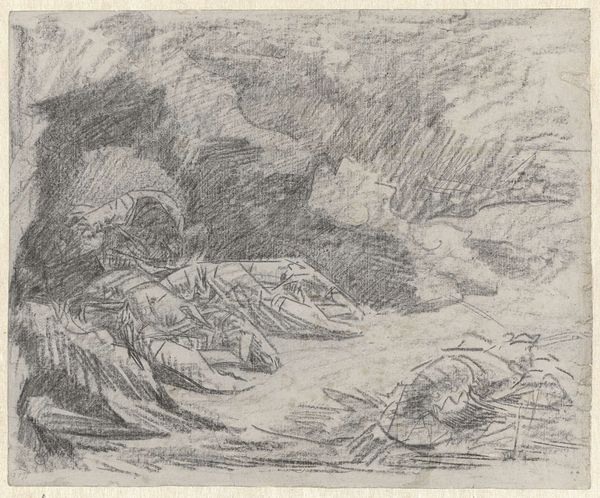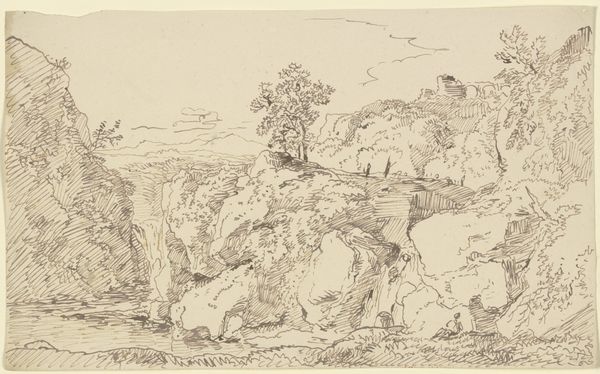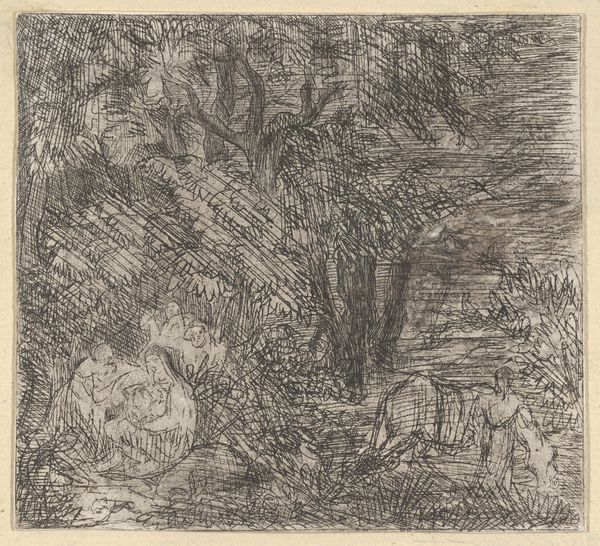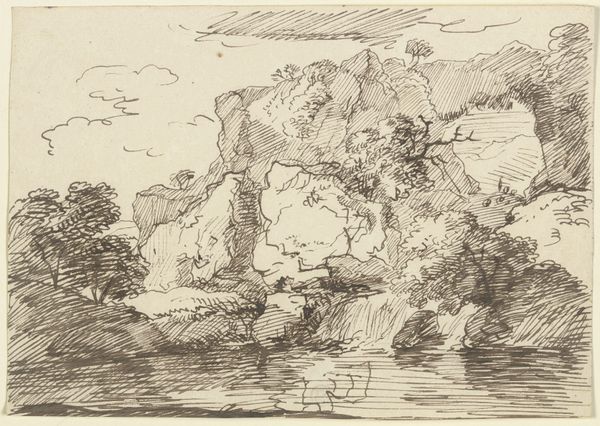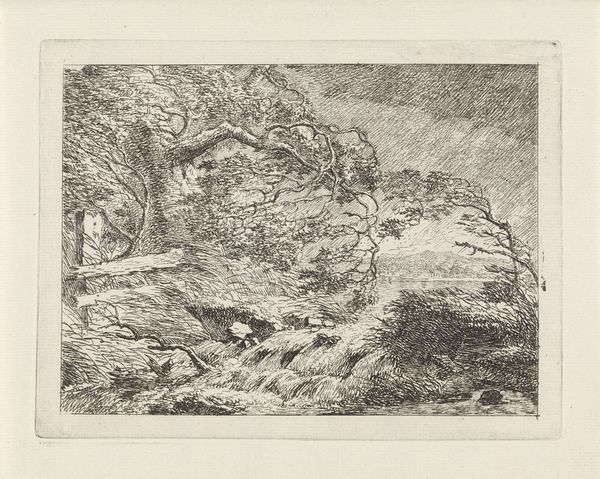
drawing, paper, ink
#
drawing
#
pen sketch
#
pencil sketch
#
landscape
#
paper
#
ink
#
ink drawing experimentation
#
line
#
academic-art
#
realism
Dimensions: height 138 mm, width 213 mm
Copyright: Rijks Museum: Open Domain
Editor: Here we have "Plantenstudie" or "Plant Study" by Guillaume Anne van der Brugghen, created sometime between 1821 and 1891. It’s an ink and pencil drawing on paper, and I’m immediately drawn to the way the artist uses lines to create depth and texture. What do you see in this piece? Curator: Formally, the artwork presents a compelling study in contrasting textures and linear densities. Observe the strategic employment of hatching and cross-hatching; note particularly the variations in stroke weight and direction. How do these formal choices articulate a sense of depth and volume? Editor: It almost feels chaotic at first glance, but the more I look, the more I see how organized the composition actually is. Curator: Precisely. The artist demonstrates mastery in manipulating the medium to achieve specific visual effects. The contrasting areas of dense linework and open space create a dynamic interplay of light and shadow, don’t you think? Note how the formal properties supersede any narrative concern. Editor: Yes, I do! I hadn't really considered it that way before, seeing how the contrasting linework defines depth without a story. What would you say is the function of the line in this piece? Curator: The line here transcends its function as mere outline, serving instead as a tool for modeling form, creating texture, and delineating spatial relationships. It is not representational but rather, presents the formal interplay of these aspects. Do you see how these applications generate a richly nuanced visual experience, even in the absence of color or conventional shading techniques? Editor: I definitely see that now. The complexity is amazing. Thanks for helping me notice these things! Curator: My pleasure! Consider how the close visual analysis has transformed our appreciation. We moved from chaotic to considered!
Comments
No comments
Be the first to comment and join the conversation on the ultimate creative platform.
